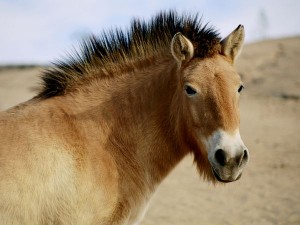Art as a Technique by viktor Shklovsky
Shklovsky brings out that there comes a point were perceptions become habitual thus  becoming unconsciously automatic. Here he refers to things we do in everyday life and that are repetitive. He gives the example of holding a pen where we no longer have to cognitively think on how to do it, we just unconsciously do, this act of holding a pen now is very different to the first time we try to hold a pen, which we do at a very early age so we might not remember but it does remind me of the first time I tried using a chop stick and once you get enough practice it becomes natural to you. He also brings out that that these types of acts are done unconscious. And if an act is doen uncouncsiously and we can’t remember doing it, then really there is not act and this extends to life he says: “If the whole complex lives of many people go unconsciously, then such lives are as if they have never been” (16). Shklovsky explains that the technique of art is, the process of making objects different and difficult; and there is a connection; the more different the more difficult and object is, the more time you will spend perceiving it. He gives the example of Tolstoy and the idea of flogging. The example I found most appealing was Kholstomer story telling from the perception of a horse. Shklovsky later mentions that “a work is created “artistically” so that its perception is impeded and the greatest possible effect is produced through the slowness of the perception (19) and that is why poetic language/ speech is a formed speech that is roughened and difficult. Here is where I really think that art is more than just causing a person to ponder in its perception, I think that the idea that art is something out of the ordinary unconscious life is true, there has to be a distinction between every day mundane things and art. But in everyday life we do spend more perceptive time in things that don’t involve art. I think that the definition of art has to be concise and selective if not almost everything could go under the term art.
becoming unconsciously automatic. Here he refers to things we do in everyday life and that are repetitive. He gives the example of holding a pen where we no longer have to cognitively think on how to do it, we just unconsciously do, this act of holding a pen now is very different to the first time we try to hold a pen, which we do at a very early age so we might not remember but it does remind me of the first time I tried using a chop stick and once you get enough practice it becomes natural to you. He also brings out that that these types of acts are done unconscious. And if an act is doen uncouncsiously and we can’t remember doing it, then really there is not act and this extends to life he says: “If the whole complex lives of many people go unconsciously, then such lives are as if they have never been” (16). Shklovsky explains that the technique of art is, the process of making objects different and difficult; and there is a connection; the more different the more difficult and object is, the more time you will spend perceiving it. He gives the example of Tolstoy and the idea of flogging. The example I found most appealing was Kholstomer story telling from the perception of a horse. Shklovsky later mentions that “a work is created “artistically” so that its perception is impeded and the greatest possible effect is produced through the slowness of the perception (19) and that is why poetic language/ speech is a formed speech that is roughened and difficult. Here is where I really think that art is more than just causing a person to ponder in its perception, I think that the idea that art is something out of the ordinary unconscious life is true, there has to be a distinction between every day mundane things and art. But in everyday life we do spend more perceptive time in things that don’t involve art. I think that the definition of art has to be concise and selective if not almost everything could go under the term art.

I agree with the idea you mentioned above “art is something out of the ordinary unconscious life”. Art should get out of real life and become a way leading us into it. But I don’t know if art is “more” than life, and maybe lots of things going under the term art is not a bad thing, anyway, we’ll have new visions of the object.
I think the problem that arises when we want to strictly define or classify art is ‘exclusion.’ When something is defined it is framed. In the case of art, it becomes an institution. When it becomes an institution, it will have products, objects to be consumed. This I believe is formed by the massive market and reproduction system consolidated in the twentieth century. So as art becomes an institution, or better said, something proposed as art makes it into a museum, there is exclusion. There are other forms that are left out. The problem is that admission is arbitrary, someone exercised power over the choices. For the task of art to only be ‘defamiliarization’ perhaps reduces arts possibilities.